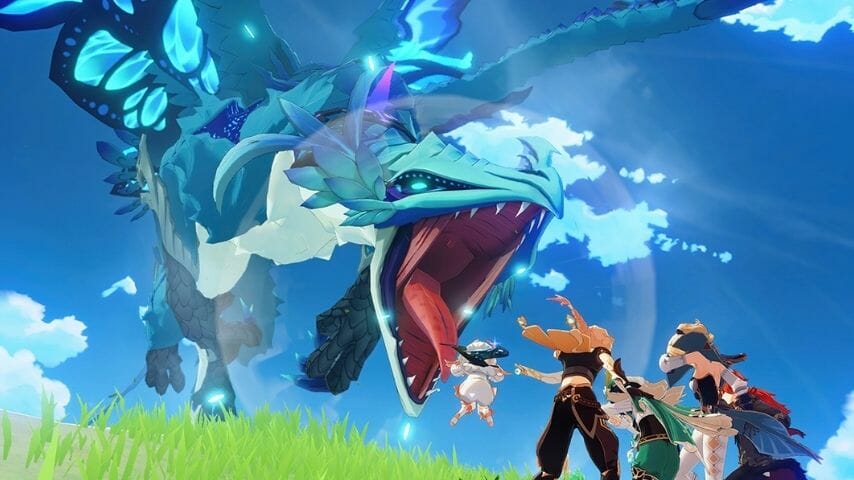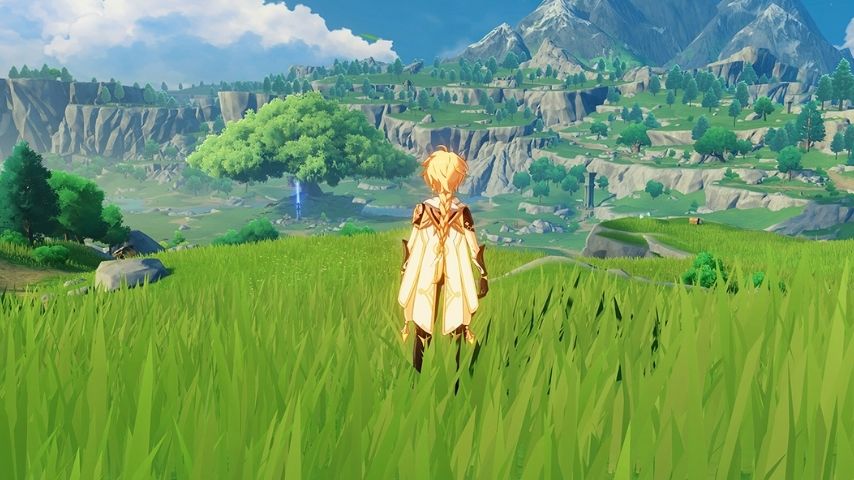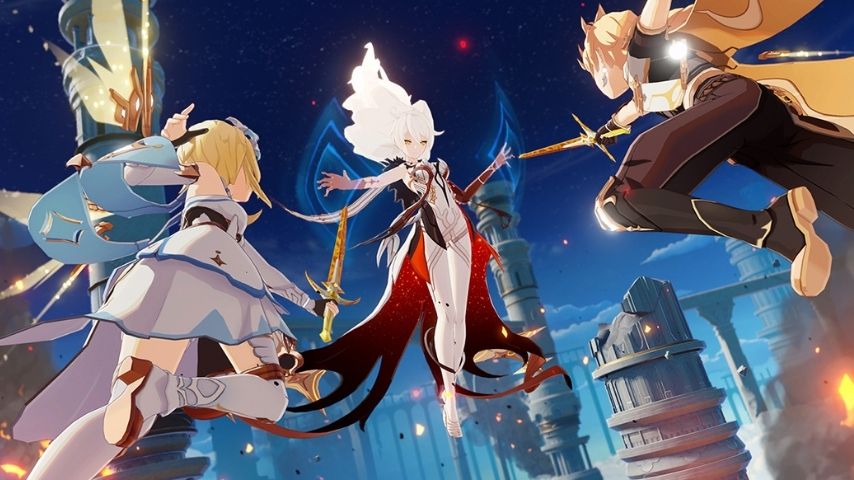
Until Jack Dorsey and Elon Musk band together to formulate some method of projecting our Twitter feeds directly into our eyeballs—a feature I am certain, and terrified, will come—I feel I’m about as “online” as one can be. When it comes to “games twitter,” I, like so many of us, am far too aware of the memes, hot takes and dreaded discourse. Naturally, however, there are of course things that slip beneath my radar, and Genshin Impact was one such thing.
Released on Sept. 28, Genshin Impact was a game I heard literally nothing about until about a week or so ago. Even then, the first time I heard mention of Genshin, it was not by its proper name, but by the moniker some fans and critics have chosen to give it—Breath of the Waifu, a play on 2017’s The Legend of Zelda: Breath of the Wild. Honestly, it doesn’t take a lot of digging around to see why. As soon as I started looking into Genshin Impact, I could draw many parallels between it and Breath of the Wild, from the game’s art design and music, to its open-world exploration and mechanics. Take all of these qualities, add in some hot anime babes, and you’ve got yourself a Breath of the Waifu, my friend.
But to be fair, Breath of the Wild’s style and mechanics bleeding into newer titles makes complete sense. For better or worse, it was, quite literally, a game changer for the Zelda series and the games industry as a whole—the type of game that causes a shift in trajectory. As we close in on it being the average game’s development time since its release, it feels very natural that we’re beginning to see a lot of games borrow from it stylistically. But for every one of these potentially numerous games, there are even more groups of people eager to call these upcoming titles “clones.” While there’s certainly some validity in questioning just how innovative a title is when you see so many similarities between it and a well-received game, it’s important to recognize that “clone” is a jumping-off point in the conversation we have about these games, and not necessarily the conclusion. And Genshin Impact is worth having that conversation.

Developed by Chinese studio miHoYo, Genshin Impact is a free-to-play action RPG that feels a hell of a lot like an MMO without the whole multiplayer part, which is, I know, a vital part of that acronym, but if you play it I swear it makes sense. The game takes place in the massive open-world of Teyvat and follows the story of a pair of fallen twins (you play as either the male or female sibling) as they are thrust into a new world filled with magic, monsters and, of course, cute (and surprisingly well-written and charming) anime people that look fresh out of RWBY.
What sets the game apart from feeling like just another MMO or a Breath of the Wild clone is that in Genshin, you can play up to 24 different characters, with each having one of seven unique powers: Cryo (ice), Dendro (life), Pyro (fire), Hydro (water), Anemo (wind), Electro (electricity), and Geo (earth). By cleverly using these elemental powers, you can do some pretty interesting things both in combat and exploration, such as using a Hydro power wielder to get an enemy wet, then following this with a quick shock by an Electro user to do some serious damage.

The game also has some intense RPG mechanics and level-up systems—arguably too intense, with a large number of varying currencies and items used to improve your characters and gameplay. However, once you realize the game does in fact have a “gacha” element to it (meaning players can pay money for loot boxes containing additional characters and items to help them in-game) it makes complete sense. Having a “gacha” system is a tactic the vast majority of these free-to-play style games use to make money, and while it can leave a bit of a bad taste in your mouth, when a game is free you kinda gotta shrug and say, “fair.” This is especially true of Genshin, which is a game that is undeniably impressive enough to be a $60 title yet you truly don’t have to spend a dime on—though perhaps I should specify spending money on free-to-play games is one of the few vices I don’t have, so if you have a tendency to do so, you might want to be a bit wary of the game.
But regardless of how much you spend, the world of Teyvat doesn’t lack things to do, places to go and people to meet. It feels thoroughly fleshed out—more so than just about any game similar to it that I can think of—and what is perhaps the wildest thing about Genshin is that while I played it on PC, the entire game is playable on mobile. Yes, you can play a game that is, honest to god, just as pretty as Breath of the Wild, on your phone, for a whopping zero dollars. And while all these factors absolutely contribute to its success, they’re also why the game is spreading like wildfire and forcing its way into our gaming conversations.
miHoYo made Genshin Impact perhaps the most impressive financially accessible game I’ve ever played. While I’m not one for that MMO feel the game has, and will probably jump off the Genshin train and crawl right back into my Hades hole, the numbers, as well as my Twitter feed, tell me there are a hell of a lot of people who are here for the ride. In just a little over a week, Genshin Impact has made $60 million just on mobile, with the numbers for PC and PlayStation 4 not yet available. Breath of the Waifu is an apt and funny name for a game filled with light piano, soft landscapes and impractically dressed women with deadly weapons, but what Genshin Impact offers outside of that makes it decidedly more than a mere clone of the Zelda title, and worth the play and admiration it’s receiving.